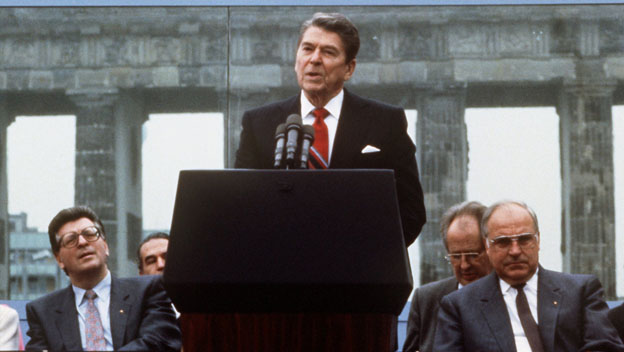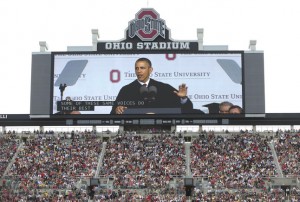Approaching the stunning landmark, standing monumental and pure, a feeling of royalty rushed over me almost automatically as a response to the Gate. In the past I’ve admired countless memorials and historical landmarks, but this Gate was unlike anything I’ve ever experienced. Studying the details of the Gate I noticed the Greek influence displayed in the Quadriga; I wondered if there was a significance of the separated openings; I was enticed to learn more about the history of such a beautifully crafted staple of Berlin.

Choosing the Brandenburg as the topic of my blog, I began researching its significance and impact. The gate was originally commissioned by Friedrich Wilhelm II to represent peace. The five passageways did have a specific purpose; citizens were only allowed to use the outermost two on each side while the middle path was left for royalty. The Greek influence atop the gate displays Eirene, the goddess of peace, highlighting the impression it’s creators planned for it to have.
Since the gate has been in place since 1791, it has changed roles throughout history. These roles have included many political issues and one interesting occurrence with Napoleon. After the 1806 Prussian defeat at the Battle of Jena-Auerstedt, Napoleon was the first to use the Gate for a triumphal procession and took its Quadriga to Paris. The Quadriga was later restored in 1814 after Napoleon’s defeat. The gate was then a powerful symbol as a Prussian triumphal arch. I discovered that several United States presidents including Ronald Reagan, John F. Kennedy, and Barack Obama have all made speeches at the Gate during and after the Berlin Wall.
Furthermore, when the Nazis ascended to power, they used the gate as a party symbol such as when Adolf Hitler was appointed Chancellor. Hitler even had an event at the Gate to celebrate one of his birthdays.
During the time that the Berlin Wall was standing, the Gate was a checkpoint that was later closed, eliminating the need for the road that passed underneath it. This was a dark time for Berlin and Germany leaving the Brandenburger Tor desolate. This changed when the Wall was taken down and the gate’s role changed once again. Now, the gate was a symbol of freedom and represented the desire for a unified city of Berlin.
Today, the Gate attracts tourists from all over the world to admire its rich history and impressive stature. This pedestrian zone is a large public area where events are held including stage shows, major sporting events, or fireworks at midnight on New Year’s Eve. The Brandenburg Gate appears to many as just a breathtaking landmark in a city that has faced so many hardships; however, learning about the purpose behind every detail has truly changed the way I view the Gate.
I’ve revisited the Gate several times after I began writing about it’s history and meaning and have accumulated a new appreciation for it. Whether one is simply passing by or under the grand structure, its presence has an affect on everyone. To know the damage that could have been done to the Gate during wars, the time of the Berlin wall, and other events, it’s unbelievable the Gate is still in such good condition. It has taken some damage in the past but restoration has brought the Gate up to its original standards. When I look at the Gate now, I see a peaceful wall holding different meanings for each person. To me, the Brandenburg Gate towers overhead as a reminder of the bigger issues in this world, the peace that can be achieved, the hard work and perseverance that drives change, and a unified Germany.
******
The Brandenburg Gate is hard to compare to anything I have been to at home. From a national standpoint, I think the closest memorial that I can compare the Gate to would be the Washington Monument in Washington D.C. The Washington Monument has been the backdrop for a number of significant historical events, one of the most famous being Dr. Martin Luther King Jr.’s I Have a Dream speech in 1963.
The Monument is one of the United States’ most famous symbols, as it stands proudly overlooking the capital much like the Brandenburg Gate does in Germany. Both are famous tourist attractions in their respective cities but also well known in their countries. People come from across the world to see the Gate and the Washington monument, but the destinations attract travelers from within their nations as well. With hundreds of thousands of tourists visiting both sites each year, it’s clear that these places mean a lot to their countries and citizens, and while the Washington Monument might be newer than the centuries-old Brandenburg Gate, it’s evident that both places hold great cultural and historical significance.
On a more local level, the Brandenburg Gate reminds me a great deal of one of Columbus’s local treasures: The Shoe. The Horseshoe, nicknamed The Shoe by its students at Ohio State, is the football stadium for the Ohio State football team. Built in 1922 as an athletic center for Ohio State students, The Shoe has been through a great deal of Ohio State history and is one of the most well-known symbols of the university and its proud student fanbase.
While The Shoe has never been stolen as a war prize like the Brandenburg quadriga statue was by Napoleon, the two share a good deal of similarities. For example, both the Gate and the Shoe are held as symbols for their respective cities. For Berlin, the Gate represents victory and pride for the Berlin people. The Shoe holds similar qualities for Ohio State students as well as Ohio State fans across the nation. The Shoe stands for all of Ohio States athletic wins and as the football team is one of the aspects of Ohio State that the students and alumni are most proud of, the Shoe is definitely a place of pride. In addition to these qualities, both the Brandenburg Gate and the Shoe were influenced by other country’s architecture when they laid the plans for designing the structures. The Brandenburg Gate was heavily influenced by ancient Greek design as the columns and stature were modeled after the Acropolis in Athens. Similar to this, the Shoe modeled itself after a famous Roman feature, the Pantheon. While they pulled from historical structures, both the Gate and the Shoe are distinct enough to stand on their own.
Looking past their surface features and meanings, the Brandenburg Gate and the Shoe are also similar in their uses. The Brandenburg Gate has been home to a host of famous speeches and concerts, such as Reagan’s “Tear down this wall” speech and the Ode to Joy concert after the fall of the wall. The Shoe has also hosted famous events, with speakers such as President Obama speaking at Spring commencement, as seen below, and big concerts such as Pink Floyd and U2 using it as a venue. The Gate and the Shoe have done a great job keeping their rich history while also staying current.
Overall, it’s clear that despite its unique features, the Brandenburg Gate is more similar to American monuments than not. Both cultures understand the importance of investing in monuments and as a result, both welcome hundreds of thousands of tourists each year. While the Gate has a much more extensive history, both the Washington Monument and the Shoe are widely recognized symbols in America as well as worldwide. It’s safe to say that in the years to come, the Gate, the Washington Monument and the Shoe will continue to be held as important symbols for their nations and the world.


